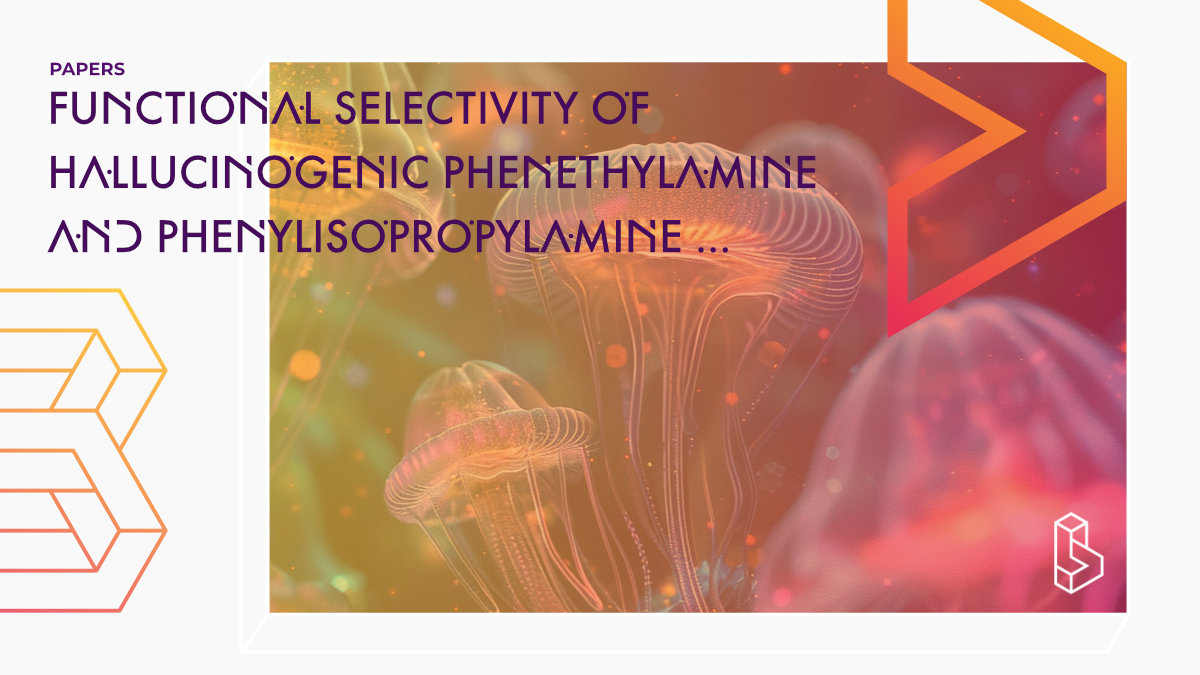This comparative study on 2,5-Dimethoxy-4-substituted phenylisopropylamines and phenethylamines examines their activity as serotonin 5-HT2A/2C agonists. It finds that phenylisopropylamines generally exhibit higher efficacy than phenethylamines at the 5-HT2A receptor, but both act as partial agonists at the 5-HT2C receptor. The research highlights differential activation of phospholipase C (PLC) and phospholipase A2 (PLA2) pathways by these compounds in cell-based assays, with phenylisopropylamines showing stronger efficacy as head shake inducers in rats, supporting the concept of functional selectivity in receptor signaling pathways.
Abstract of Functional selectivity of hallucinogenic phenethylamine and phenylisopropylamine derivatives at human 5-hydroxytryptamine (5-HT) 2A and 5-HT2C receptors
“2,5-Dimethoxy-4-substituted phenylisopropylamines and phenethylamines are 5-hydroxytryptamine (serotonin) (5-HT)2A/2C agonists. The former are partial to full agonists, whereas the latter are partial to weak agonists. However, most data come from studies analyzing phospholipase C (PLC)-mediated responses, although additional effectors [e.g., phospholipase A2 (PLA2)] are associated with these receptors. We compared two homologous series of phenylisopropylamines and phenethylamines measuring both PLA2 and PLC responses in Chinese hamster ovary-K1 cells expressing human 5-HT2A or 5-HT2C receptors. In addition, we assayed both groups of compounds as head shake inducers in rats. At the 5-HT2C receptor, most compounds were partial agonists for both pathways. Relative efficacy of some phenylisopropylamines was higher for both responses compared with their phenethylamine counterparts, whereas for others, no differences were found. At the 5-HT2A receptor, most compounds behaved as partial agonists, but unlike findings at 5-HT2C receptors, all phenylisopropylamines were more efficacious than their phenethylamine counterparts. 2,5-Dimethoxyphenylisopropylamine activated only the PLC pathway at both receptor subtypes, 2,5-dimethoxyphenethylamine was selective for PLC at the 5-HT2C receptor, and 2,5-dimethoxy-4-nitrophenethylamine was PLA2-specific at the 5-HT2A receptor. For both receptors, the rank order of efficacy of compounds differed depending upon which response was measured. The phenylisopropylamines were strong head shake inducers, whereas their phenethylamine congeners were not, in agreement with in vitro results and the involvement of 5-HT2A receptors in the head shake response. Our results support the concept of functional selectivity and indicate that subtle changes in ligand structure can result in significant differences in the cellular signaling profile.”
Authors: Pablo R. Moya, Kelly A. Berg, Manuel A. Gutiérrez-Hernandez, Patricio Sáez-Briones, Miguel Reyes-Parada, Bruce K. Cassels & William P. Clarke
Summary of Functional selectivity of hallucinogenic phenethylamine and phenylisopropylamine derivatives at human 5-hydroxytryptamine (5-HT) 2A and 5-HT2C receptors
This study investigates how different hallucinogenic compounds, specifically phenethylamines and phenylisopropylamines, interact with two types of serotonin receptors in the brain: 5-HT2A and 5-HT2C. These receptors are important because they influence various mental states and conditions, such as hallucinations, anxiety, and depression.
Find this paper
https://doi.org/10.1124/jpet.106.117507
Paywall | Google Scholar | Backup | 🕊
Cite this paper (APA)
Moya, P. R., Berg, K. A., Gutierrez-Hernandez, M. A., Saez-Briones, P., Reyes-Parada, M., Cassels, B. K., & Clarke, W. P. (2007). Functional selectivity of hallucinogenic phenethylamine and phenylisopropylamine derivatives at human 5-hydroxytryptamine (5-HT) 2A and 5-HT2C receptors. Journal of Pharmacology and Experimental Therapeutics, 321(3), 1054-1061.
Study details
Compounds studied
2C-X
Topics studied
Chemistry
Neuroscience
Study characteristics
Animal Study

